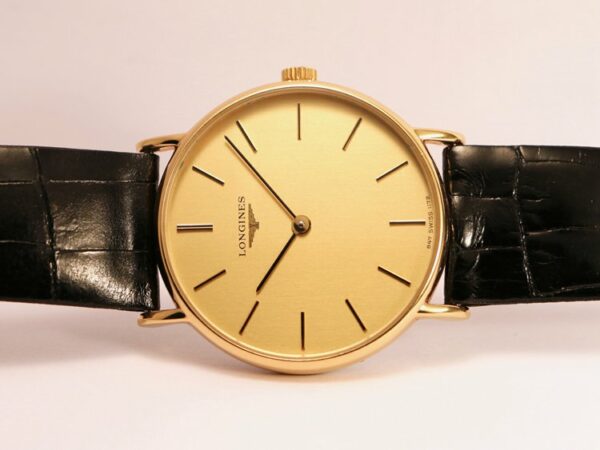Did you know the popular Swatch Watches and Clocks descended from the Hamilton brand?
These watches are quite famous as they are the preferred watch option for most Military, Airline, and Railroad operators in America, if not the world.
How did vintage Hamilton watches claim the top spot amongst collectors? Well, that’s for you to find out as you read on.
Table of Contents
How it all Began
It all began in the year 1892, when The Keystone Standard Watch Company sold its business to Lancaster businessmen at a Sheriff’s Sale due to bankruptcy.
Almost at the same time this happened, the newly acquired business merged with the Aurora Watch Company, Illinois, forming a new and improved watchmaking business. The new business chose the name – Hamilton Watch Company.
The Hamilton Watch Co. incorporated its business in Lancaster, Pennsylvania, in 1892, and a year after (1893), it made its first commercial watch.
And although the company valued its origin and planned to stay connected to its roots through its name, it lost the patent to the already prominent Waterbury Clock Co.
The “Columbian” name was already a Waterbury model, so the new business settled on Hamilton, after James Hamilton (son of Andrew Hamilton, a Scottish-born USA lawyer.)
From its inception, Hamilton strove for excellence with the vision to “build only watches of the highest quality.” The first watch, made in 1893, was an 18-size pocket watch with 17 jewels with the best accuracy America had ever seen as far as the 19th century was concerned.
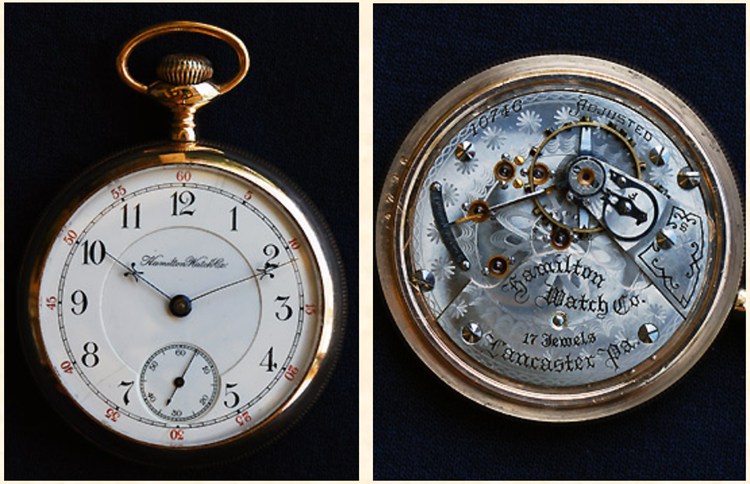
This feature made the military and Railway workers choose Hamilton as its official watchmaker during the railroad expansion and the first world war.
The Railroad Expansion– 1893 – 1908
Before the first World War, Hamilton controlled more than half of the watchmaking market in the USA.
The company honed its knowledge of horology and delivered accurate time-telling watches that reduced railroad accidents prominent in the 19th century. Thus, Hamilton watches met the needs of the booming railway transport system.
The need for accurate watches was born from the 1891 Ohio Train Wreck which necessitated the production of high-accuracy watches.
Since the Railway system works with timing – arrival, departures, and crossings – to avoid collision on track. A split second could be the difference between a successful intercross and an accident.
With its reputation of delivering highly accurate timepieces, Railway workers – engineers, conductors, and inspectors – adopted the Hamilton watches. With time, the brand became the Railroad Timekeeper of America.
The Introduction of the Professional Watches (1908 – 1918)
In 1907, the company elected a new president Charles F. Miller whose mission was expanding the brand’s movements. At the turn of the century, large movements like Hamilton’s began to phase out favor smaller sizes.
By 1909, Hamilton started encasing its movement like other watchmakers and soon overtook the trend.
In 1917 when the US joined the war, the Hamilton Watch Co. made its first 0-size wristwatch with 17 jewels and 983 movements for men.
The Railroad watches and fashion wristwatches for women and men used encased movements. Although the ladies’ designs started big, they became smaller with time, and the big ones went to the gents.
With demand came supply and the need to advertise so, Hamilton marketed its product in a National Geographic magazine.
The military found Hamilton’s watches to be useful when navigating torpedo boats, destroyers, and submarines. Their patronage hiked sales up to $5.8 million in 1929, an astronomical figure for a business that existed in the war era.
Post-World War I – 1919 – 1939 (Hamilton Military)
During and after the First World War, Hamilton channeled its efforts towards supporting the American troupes. It became the official pocket watch for the USA military by supplying precise time-telling pieces supporting industrialism.
The returning troupes appreciated the practicability of wearing wristwatches formerly attributed to women. Because watchmakers Elgin and Waltham already made them, Hamilton channeled its resources to cater to a high-taste clientele.
Thus, the Hamilton Wristwatch for Men containing 17 jewels, 14 karat gold encasement, and 981 movements came to life.
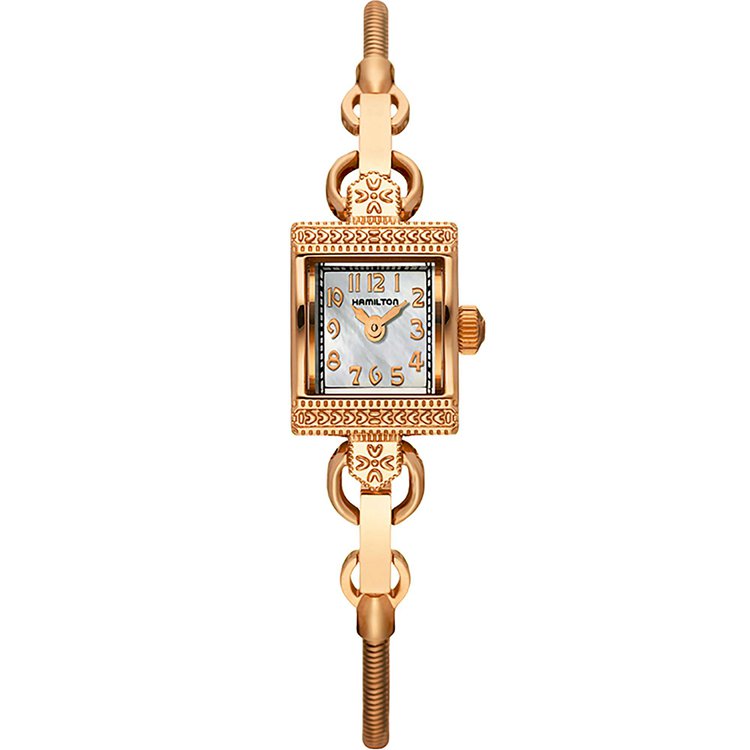
In 1929, Hamilton acquired Illinois, then E. Howard Watch Company in 1931 and made limited designs in its name.
Despite its remarkable success during the war, Hamilton couldn’t escape the Great Depression as sales dropped to about $1.5 million from the whopping $5.8 million it recorded before 1932.
Broadway Limited Edition Pocket Watch (1940 – 1945)
Not one to stay down for long, Hamilton recovered in 1941, recording sales of $9 million.
The Broadway Limited edition model was a 16-size watch fitted with 17 jewels. You can see the name Hamilton boldly etched on the dial’s front with a black tick indicating the minutes and a red one every five minutes.
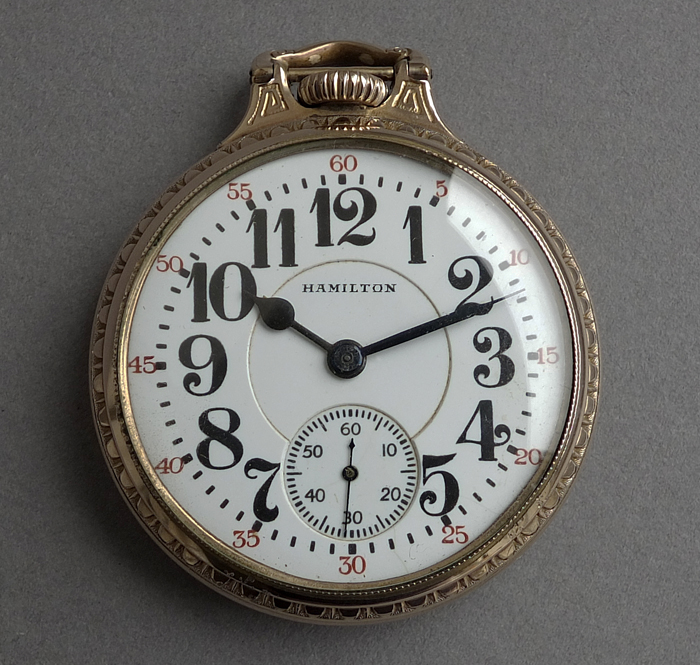
Post-World War II – 1950s Supremacy
By the Second World War, Railway transport gave way to Aircraft travel leading Hamilton to a partnership with Airline corporations. Pilots used the custom-made watches for safe flights, thus becoming the brand’s main consumer (because Hamilton stopped commercial production.)
In the Mid-1950s, Hamilton diversified its production to accommodate two new subsidiaries – Vantage and Buren. It also branched out of watchmaking by producing Rocket fuel alloys, Missile Timers, Safety and Arming Military Devices.
Hamilton was the last Vintage Watch company to close up when it sold to Switzerland’s Swatch Company in 1969.
How to Properly Identify a Vintage Hamilton Watch
The multiple designs of the Hamilton Watch Co. brand make identification a bit difficult, but with us and with practice you’ll become a pro in identifying them.
Here, we’ll point you in the right direction and show you what to look out for so you won’t make mistakes.
Since Hamilton Watch Co. had a meticulous record system that kept track of its various designs, each model with their unique names and various parts can be distinguished. We plan on using this information to our advantage.
Before you continue, here are a few things we recommend you get. It’ll help you with the identification;
- A magnifying glass or Jeweler’s Loupe (Eyeglass) – Inspect the movement and other tiny lettering/numbering.
- Clean cloth – To polish your encasement and check for solder.
- Flat blunt blade – To pry the back casing open.
Now that you have those, you’re ready to go.
Examine the Dials
Hamilton watches had the company’s name etched boldly on the dial’s face from 1893 to the late 1960s. After then, the brand lost the rest of the letters and stuck with a model “H.” If you don’t see a Hamilton or H on the dial, it might be one of two reasons; The watch is a Hamilton subsidiary or a fake.
Remember Hamilton had subsidiaries that didn’t use the parent’s name yet marketed their products as part of the brand’s. Your next order of business is to distinguish the subsidiary from the counterfeits.
Vintage Hamilton dials often had a second mini-dial in the “6” position.
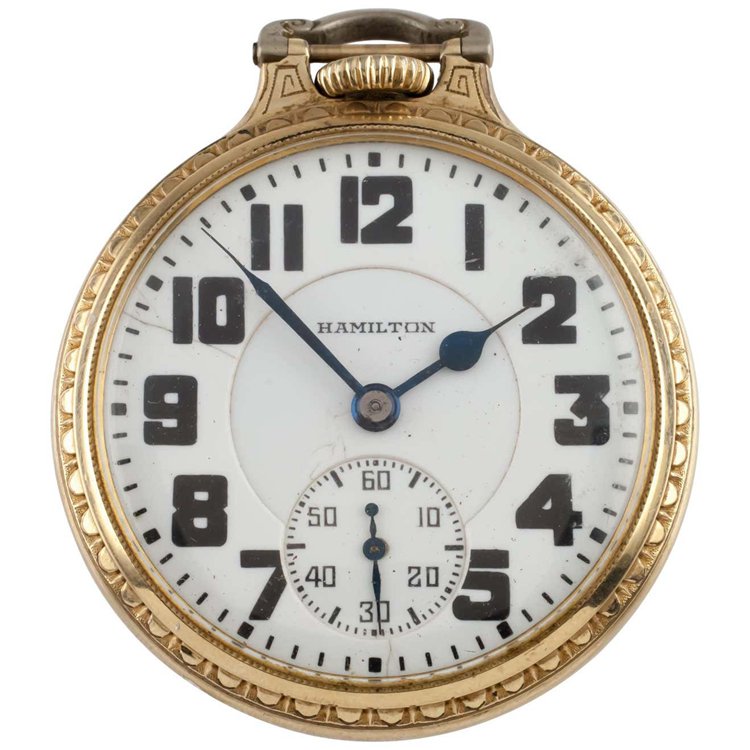
The Hands have a Story to Tell
Additionally, vintage Hamilton watches typically used three hands – a long one for minute reading, a short one for the hour reading, and a tiny one on the mini-dial. They had a winder on the side to adjust the hands occasionally.
The Inner Workings
Hamilton watches have three numbers (sometimes with letters) on the movement. It’s different from the Serial Number, which consists of more numbers. Gently pry the back casing open to inspect the movement.
Hamilton marked the inner part of its case with its name like the dial. By the late 1960s, it extended this marking to the outer case and added a crown to the Hamilton name.
Movements, however, aren’t a reliable source of identification because it was common for watchmakers to import movements from other notable producers.
So, if you see the phrase “Hamilton movement” on a movement, it doesn’t signify a genuine Hamilton watch. Also, note that the company made some watches, especially for Tiffany & Co., which makes them Hamilton watches. (Tiffany & Co. by Hamilton.)
Another reason you shouldn’t rely only on movement is the famous “cushion system.” During the Second World War, Hamilton put 1920 movements into its 1940 watches.
Inspect the Serial Number
When assessing your vintage Hamilton watch with Serial Number, use the movement instead of the case. Inspect the serial number for bond signs as they indicate restoration.
Here’s a table of selected vintage Hamilton Watch serial numbers from 1893 – 1965. Check here for a more detailed list.
Year |
Serial Number |
1897 |
#24648 |
1901 |
#144880 |
1913 |
#971851 |
1923 |
#1676068 |
1940 |
C001 |
1950 |
C390,000 |
1969 |
C529,200 |
Materials
Hamilton watches use Glass and Mineral Glass for their crystals because Sapphires came in the 1960s. Hamilton Watches used damascened parts, 17-jewel movements and was made with temperature adjustments. The 747 models in 1947 changed that, however.
In 1931, Hamilton added Elinvar to its catalog. This new model had a solid balance wheel to counteract inaccuracy-causing mechanisms like magnetism. The company also pioneered the addition of gold numerals to small-watch dials.
Confirm the Style
Since Hamilton didn’t sign “H” on its crown until 1950, when you see a pre-World War II model with a signature, it is clearly a fake.
An authentic vintage Hamilton should have a snap or screw case on the back. All watches within a model group have the same style down to the case, shape, dial, and movement.
By 1929, Hamilton watches had five designs, the Cushion, Oval, Square, Barrel, and Tonneau, all trendy in their era except the Oval.
Size
Vintage Hamilton watches started with 18-size dials until 1908. Then the 0-size came in 1917 after the 16-size of the 1909-1918 designs. Most Hamilton movements before the 1930s used 17-jewels, and most of them were temperature adjusted.
Identifying the Different Types of Hamilton Watch Co. Brands
To properly identify vintage Hamilton watches, you need to be aware of the different types out there.
The Hamilton Pulsar
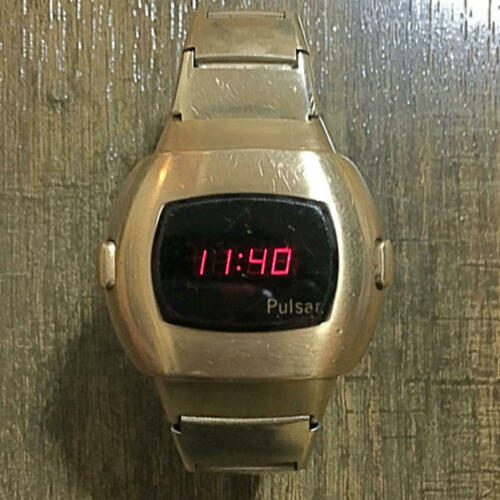
The Hamilton Pulsar is a design of historical significance. And although it came in 1970 (after-sale to Swatch.) It debuted on The Tonight Show with Larry King as the first wristwatch with a digital LED display instead of a dial.
This model is futuristic and came as a foreboding of the company’s new direction.
The Hamilton Ventura
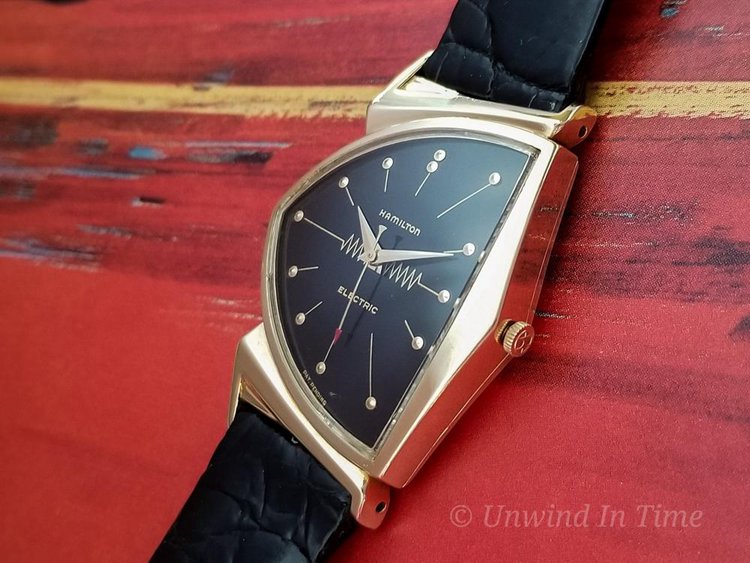
In 1957, Hamilton made a unique electric wristwatch which was its first-ever – Ventura. The Atomic Age inspired the design of this model with a dial shaped after a shield. The unusual design coupled with an Elvis nod led to its inevitable popularity in the late fifties.
The Hamilton Altair
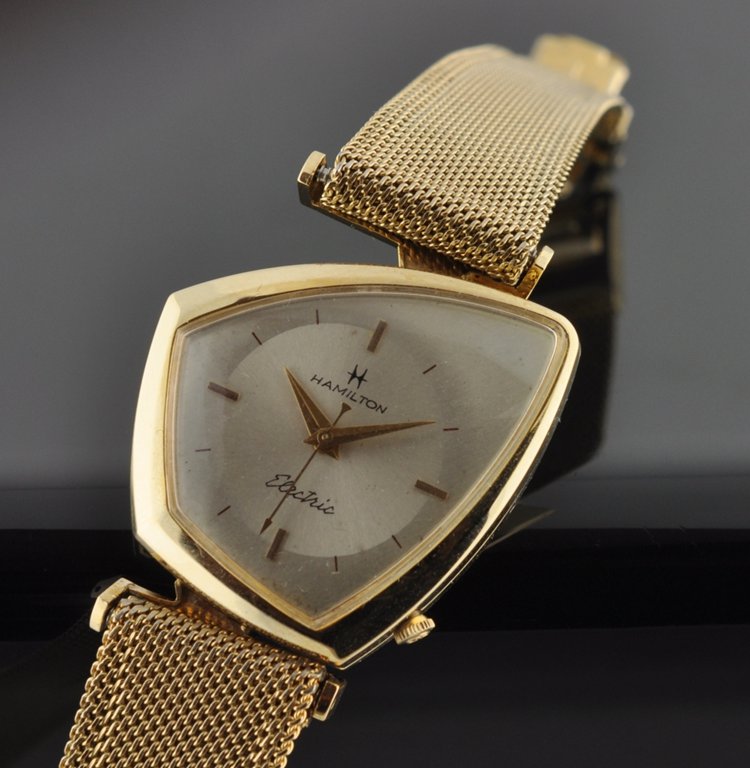
The Hamilton Altair is a mid-century electric wristwatch featuring a Richard Arbib asymmetric case. The company produced a limited 1,600 copies of this design, making it a rare find (it was coveted then and now.) It came with two varieties of wristbands – Solid Metal and Pure Leather.
The Hamilton Enamel Bezel Watch Trio
The Hamilton Enamel Bezel Watch was an upscale series of three watches – Coronado, Piping Rock, and Spur. Each design had a colorful enamel wristband that featured an art deco design common in the early Victorian era.
Hamilton made only 35 pieces of the Piping Rock for the New York Yankees when they won the World Series in 1928.
Hamilton Coronado
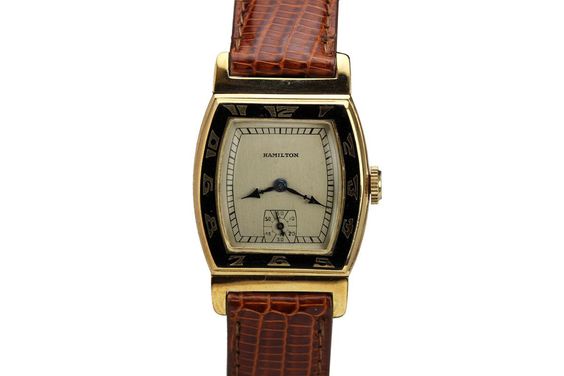
Hamilton Piping Rock
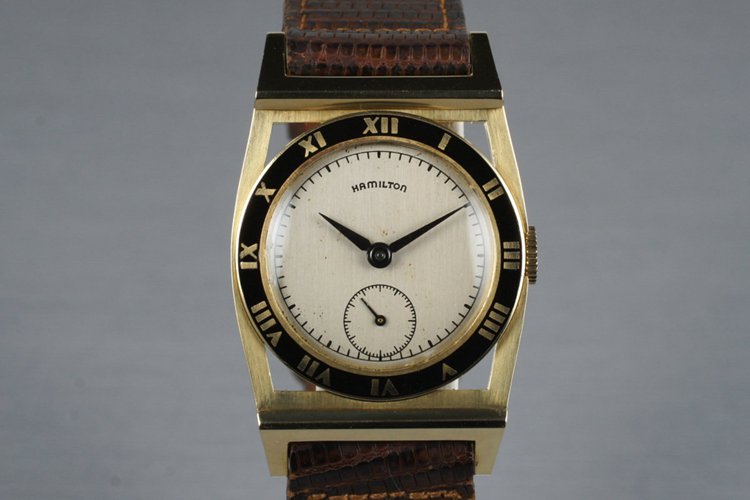
Hamilton Spur
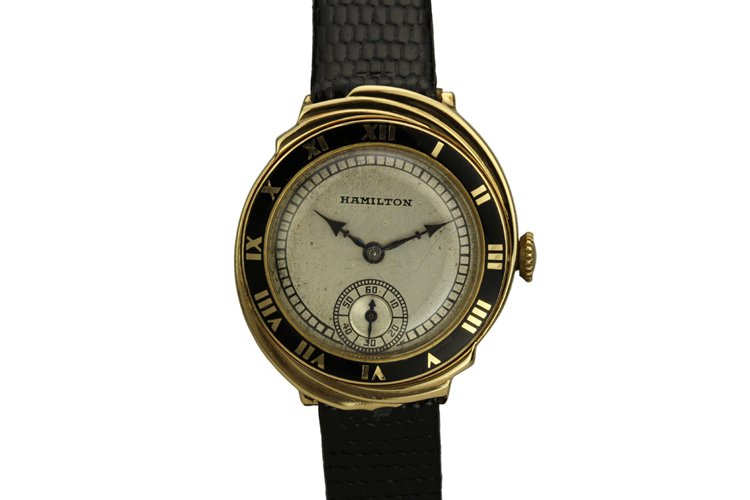
The Military Watch
The Military Watch featured Khaki straps with firm grips necessary during a war. The World War II model used 987 movements until 1942, when it added the 987A movement. The three-hand (hour, minute, and second) dial sits in a stainless-steel frame with a steel wind.
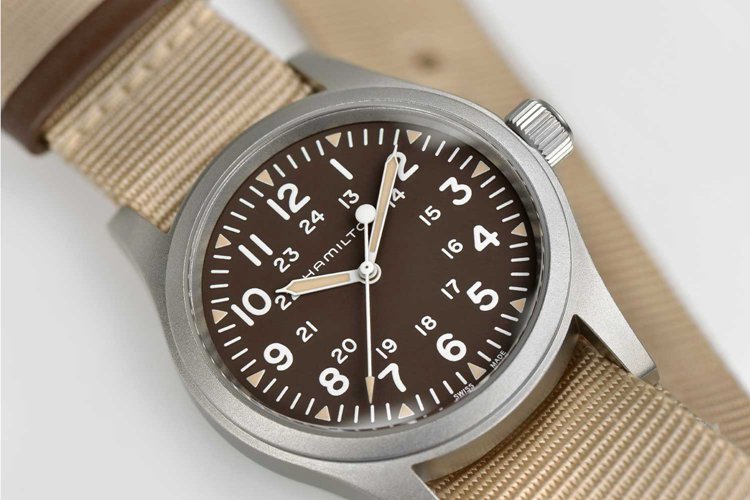
The Railroad Watch
The 16-size 992B Railroad pocket watch movement entered the market in 1940. It differed from the standard winding arbor and wasn’t interchangeable.
This watch came in the Elvinar-Exra white-colored hairspring, with ten karat gold casing, and it read Railway Special above the arc of the Hamilton name on the dial.
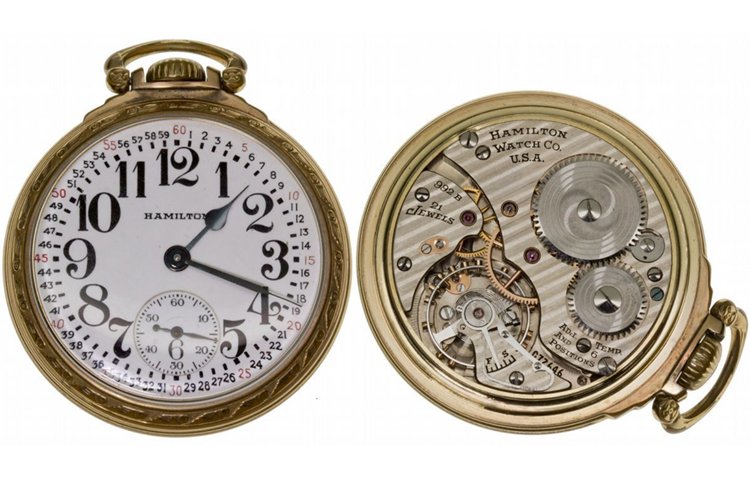
Now that you can use the year of production and model to identify your vintage Hamilton watch let’s talk evaluation.
Valuing a Vintage Hamilton Watch
Hamilton stood out amongst the rest because of its dedication to accurate timekeeping.
The railroads and aircrafts depended on the accuracy of this timepiece, and since it delivered on its promise, it earned its reputation. Notorious pilots like Richard E. Bryd, Lieut. Hegenberger and Maitland and Roy Chapman Andrews all used Hamilton watches.
Many people focus on the market value without considering other components that affect the bottom line. So don’t be like them, here are a few other things you need to consider and they include Age, Rarity, Material, Sentiment, and Condition.
Age
Check the dials for aging signs such as slight blemishes, discoloration, fading Serial Numbers, and markings. If your Hamilton watch is in stellar condition, it was probably restored, which drops its value.
The older the Hamilton watch, the more expensive it would be. Hence, the reason why the 1929 14K Gold Hamilton Spur has a $6,000 asking price. Avid collectors should however consider the 1940s – 1960s Hamilton Watch Co.’s heydays.
According to their years, check this comprehensive table for the vintage Hamilton watch models.
Year |
Model |
1908 – 1919 |
Hamilton Pocket Watch |
1928 |
Hamilton Piping Rock |
1940 |
Hamilton Railroad Watch |
1942 |
Hamilton Military Watch |
1940 – 1945 |
Hamilton Broadway Limited-Edition |
1970 |
Hamilton LED Pulsar |
Rarity
Vintage Hamilton watches in surplus quantity aren’t as expensive as the rare ones. So, don’t buy a common model like the Martin at a premium price. The Railway Special and Broadway Limited costs about $200 – $500 based on its condition.
The 35 pieces Piping Rock and 1,600-piece Coronado model sell for a whopping $3,500.
Material
The durability of your vintage Hamilton watch determines its bottom-line value. The Khakis, Steel, and Gold Chain straps used for different models stood the test of time.
They are as coveted today as they were in the 19th century though rarity still trumps material as a value-defining factor.
Sentiment
Notable characters over the years wore Hamilton watches, even movie stars. In 1932, it featured in Shanghai Express, then Elvis Presley wore a Hamilton Ventura in the movie Blue Hawaii, and Matthew McConaughey in Interstellar.
The most popular vintage Hamilton watch on Watch Charts is the Khaki, with over 8,000 listings.
You can check Time and Tide for an extensive list of Hamilton watches in Hollywood.
Condition
We classify Vintage watches with the Antiquorom Auctioneers’ System into three condition groups – Excellent (AAA,) Very Good (AA,) Good (A,) and Fair (B.) You can also determine the value based on the percentage grouping.
- 90 – Pristine Condition
- 80-89 – Normal Wear and Tear
- 70-79 – Slight scratches and Faded numbers
- 60-69 – Brass and Dings
- < 60 – Damaged and Missing parts
Is the movement still in good condition? There’s no point buying a vintage Hamilton watch that can’t tell time accurately or worse isn’t working. It defeats the purpose of the brand.
Inspect the gold plates for brassing and replacement signs. Despite their rarity, vintage Hamilton watches aren’t expensive compared to other brands of their era.
Ensure you’re not buying a Vintage Hamilton watch for a premium if it has fittings from another brand. Restoration significantly reduces the cost of a vintage item, so be careful. Vintage Hamilton watches cost between $140 – $2,134, according to Watch Charts.
You can find a vintage Hamilton watch for way more than that, but it depends on the sentimental value attached and rarity. Rare finds like the Hamilton Ventura and Altair are about $4,000, while regular Hamiltons are inexpensive regardless of their age.
Final Words
Remember to research and compare market prices before investing your money in a vintage Hamilton watch. Also, improving your brand knowledge gives you a bargaining edge when you’re in the market to buy.
- Always prepare a checklist before you buy a vintage Hamilton watch.
- Your checklist should contain everything you’ve learned in this article – identification and value guide.
- Use the Serial Number on the movement instead of the casing.
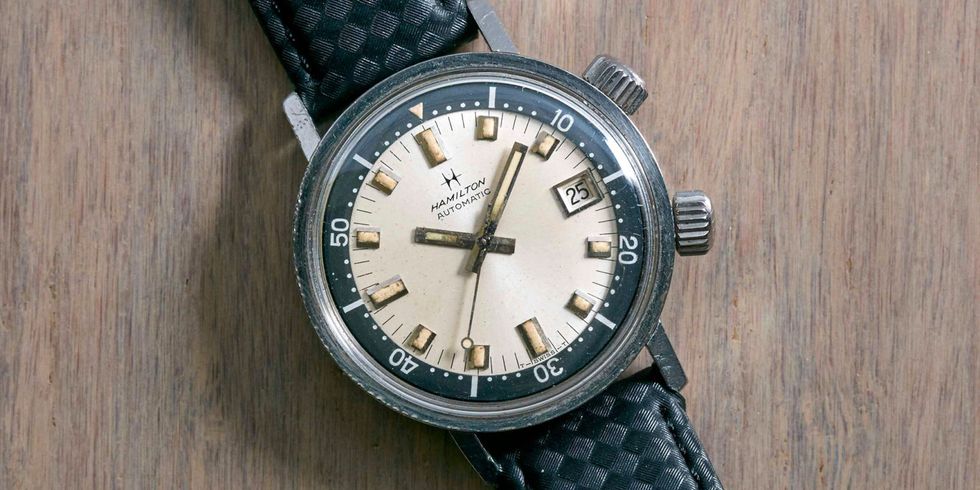
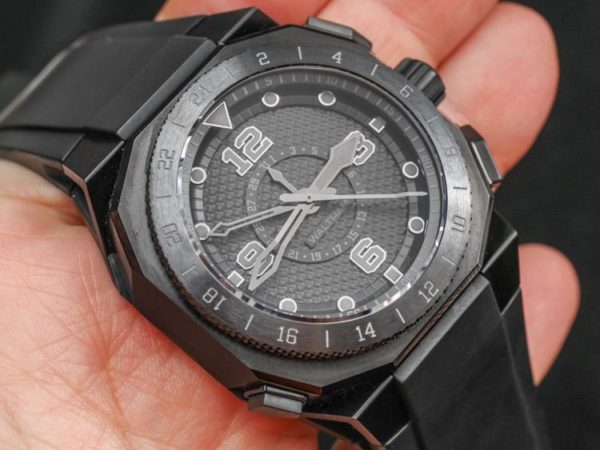
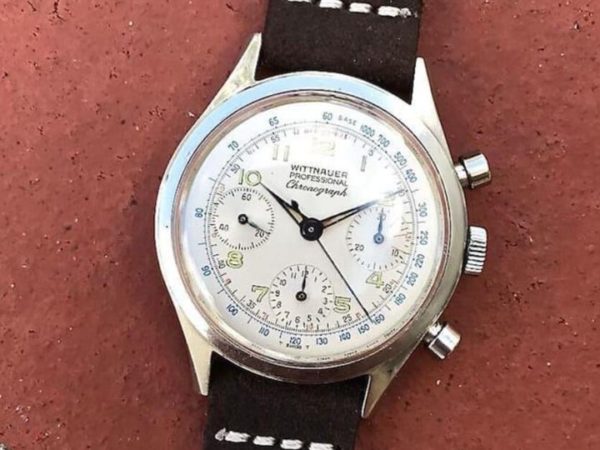
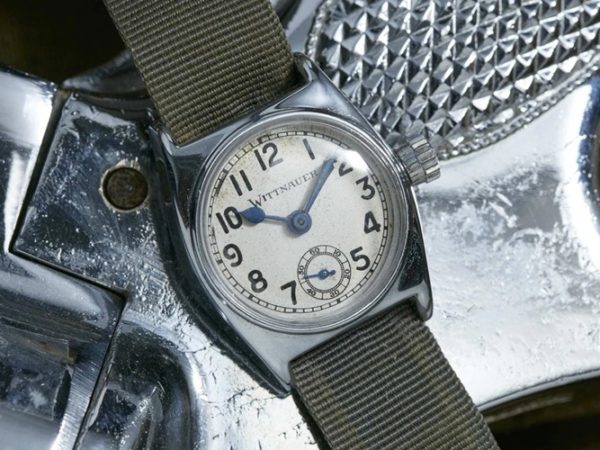
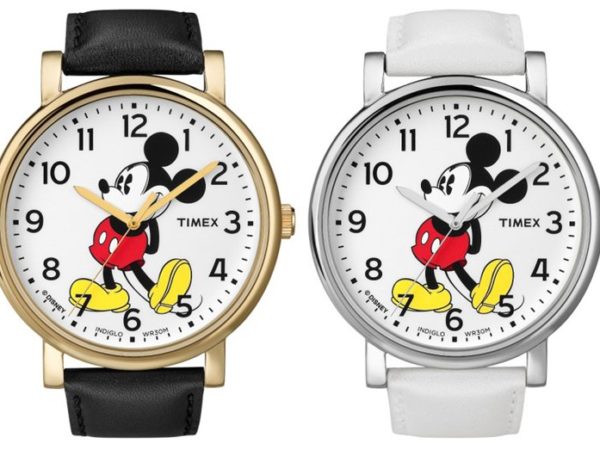
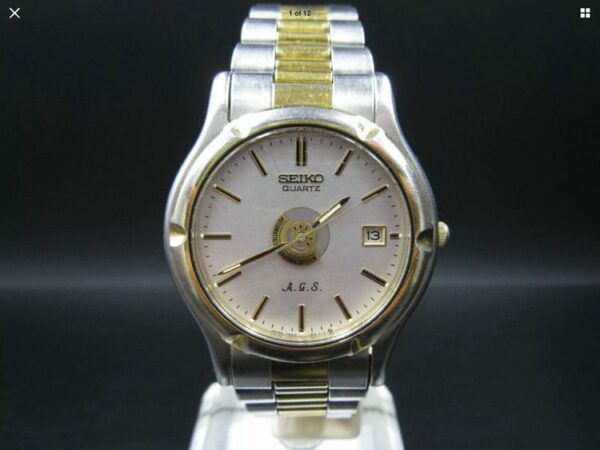
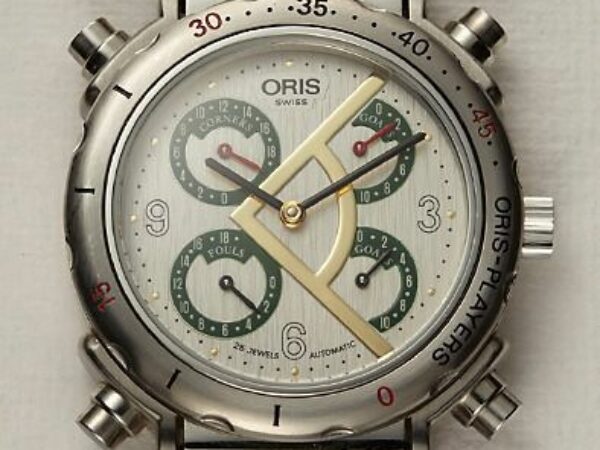
![Vintage Mickey Mouse Watch Guide [Dating & Values]](https://www.txantiquemall.com/wp-content/uploads/2022/02/Lorus-Mickey-Watches-600x450.jpg)
